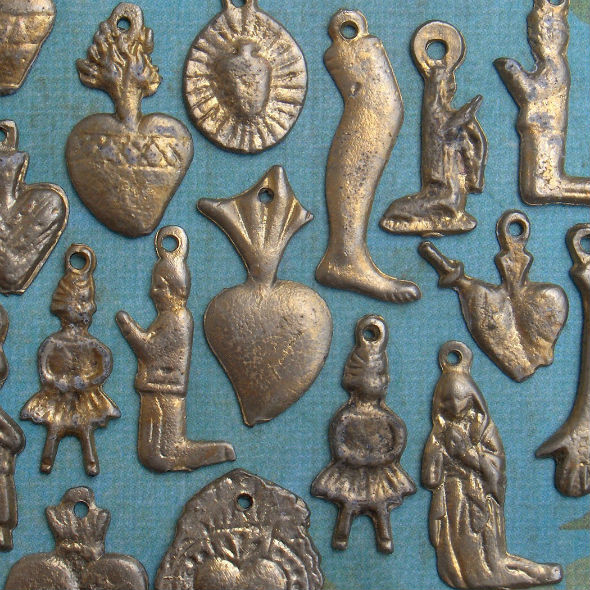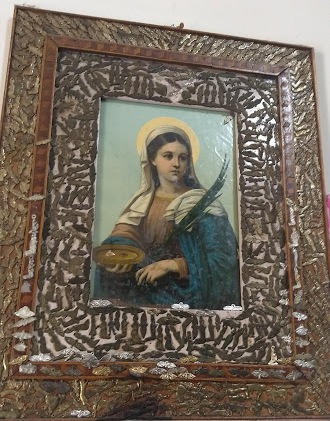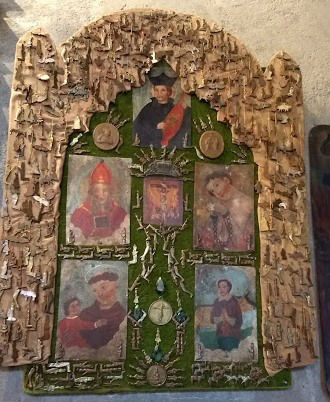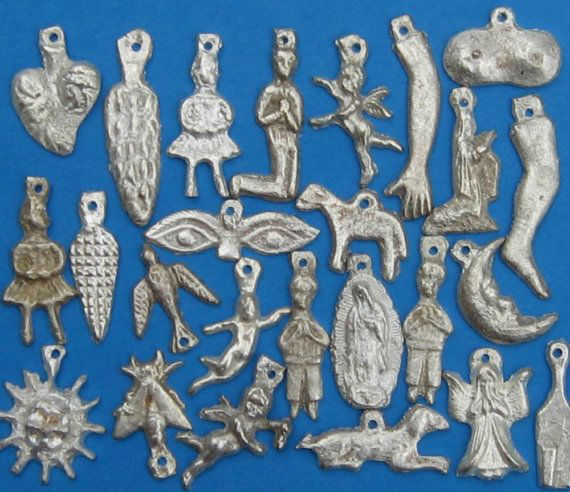
by Joseph Toone
In every church in town you notice that the statues are literally festooned with all manner of votive offerings from the faithful – flowers, photographs, religious medals, handwritten notes, rosaries and, invariably, tiny silver or gold body parts, animals and kneeling people. These miniatures are known as milagros (miracles) Milagros are primarily offered to a saint, or Virgin, in thanks and commemoration for his or her answering a petitioner’s prayer with a miracle.
While milagros have traditionally been fashioned from a variety of materials, such as wax, wood or a variety of metals they are most typically made of sliver or a silver like metal and, occasionally, gold.

Milagros are an ancient tradition common among pre-Christian Greeks, Romans, Egyptians, Celts, Phoenicians and other peoples.
As Catholicism spread through the Mediterranean, saints, rather than old pagan deities, became the object of veneration and petitioners’ prayers. Particularly in Catholic Spain, saints were thought to be able to influence all aspects of daily life, as mediators between God and man. Every village, every profession, every festival and every day of the year had its patron saint. Milagros, little changed in form from those of the pre-Christian era, were the principal means by which the faithful thanked the saints for answering their prayers.

The earliest milagro in Mexico was commissioned by Herman Cortes in 1528 to Mary in thanks for surviving a scorpion bite.
Milagros of body parts are normally associated with physical ailments such as lung cancer, kidney stones, headaches or hearing loss. The most popular recipient of milagros locally is Saint Lucy for her help with vision issues. Her image in the Temple of Good Health is lined inches thick with grateful eyeballs.
Other popular images and meanings include:
Heart:love, longing, passion
Arm: strength
Leg: support, movement
Hand:work, creativity, help
Praying woman/man:faith, humility
Sheep:community, faithfulness or erasing peer pressure
Pig:abundance as in bringing home the bacon, over eating
Horse: travel
Mule:looking for work or being stubborn
Hen – mothering, being a good egg
Bulls -stamina, protection
Dog: protection, loyalty
House: protection, family, returning home after travels, owning a home
Books and pencils - students

Milagros were once such a common custom in Mexico that only rarely did anyone think to mention them in literature or save them from being melted down for their silver or gold content.
The use of milagros is an ancient and nearly universal practice that endures. Milagros are admired for their history, cultural importance and for folk-art lovers, their artistry and unique appeal.
**************

Joseph Toone is Amazon's bestselling author of the San Miguel de Allende Secrets series of books and TripAdvisor's best rated historical walking tour guide. For more information contact toone.joseph@yahoo.com or visit History and Culture Walking Tours or JosephTooneTours.com, also on FaceBook.
|